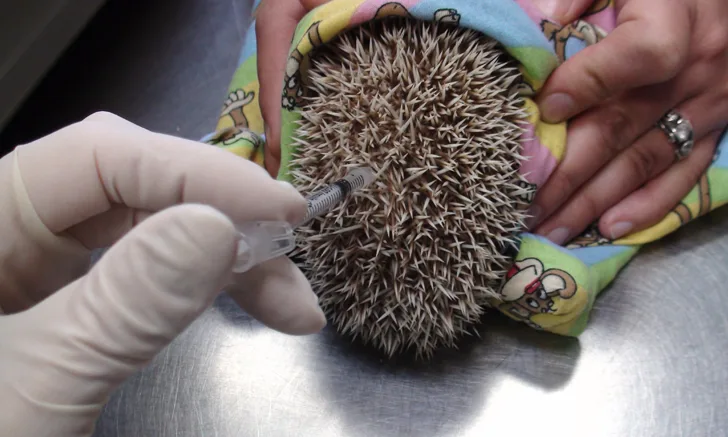Sedation in African Pygmy Hedgehogs
Angela M. Lennox, DVM, DABVP, Avian & Exotic Animal Clinic, Indianapolis, Indiana
In the literature
Hawkins SJ, Doss GA, Mans C. Evaluation of subcutaneous administration of alfaxalone-midazolam and ketamine-midazolam as sedation protocols in African pygmy hedgehogs (Atelerix albiventris). J Am Vet Med Assoc. 2020;257(8):820-825.
The Research …
African pygmy hedgehogs almost always require immobilization to undergo complete physical examination. This species is prone to neoplasia1,2; thus, examination should be thorough and include careful inspection of the oral cavity, as well as abdominal palpation.
Anecdotally, immobilization is often accomplished via chamber induction with inhalation agents. Although chamber induction may seem safe, it can be stressful in many species (including rodents and rabbits) and can increase staff exposure to anesthetic waste gas.3 Clinician resistance to injectable sedative agents may be due to perceived difficulties in injecting conscious hedgehogs or the desire to limit time between presentation and discharge.
This blinded crossover study compared 2 SC sedation protocols in hedgehogs: ketamine (30 mg/kg) in conjunction with midazolam (1 mg/kg) and alfaxalone (3 mg/kg) in conjunction with midazolam (1 mg/kg). Various physiological parameters were measured. Flumazenil (0.05 mg/kg SC) was administered 45 minutes after sedation for midazolam reversal. Although SC administration was not discussed, SC and intramantle injection are typically easy to accomplish (Figure).
Both protocols resulted in sedation levels that would likely allow for thorough physical examination and optimal positioning for diagnostic imaging. Time to loss of righting response, duration of effects, and recovery time after flumazenil administration did not differ significantly.
Sedation with ketamine and midazolam was less consistent than with alfaxalone and midazolam, as not every patient completely lost the righting response, and there were more pronounced effects on body weight and food intake in the 6 days after sedation. Further, because of ketamine’s acidic pH, this drug can cause more pain on injection as compared with alfaxalone.

Intramantle injection of a combination of drugs used for sedation in an African pygmy hedgehog
… The Takeaways
Key pearls to put into practice:
A complete physical examination in African pygmy hedgehogs almost always requires immobilization. Thorough examination is essential because of the species’ high incidence of neoplasia.
Although inhalation agents via chamber induction are commonly used for sedation, injectable agents are a viable option that likely reduce stress and decrease staff exposure to anesthetic waste gas.
Both protocols discussed in this study provided adequate sedation for thorough physical examination and, likely, optimal positioning for diagnostic imaging and were apparently safe.
The author uses alfaxalone (1-3 mg/kg), midazolam (0.5-1 mg/kg), and butorphanol (0.2 mg/kg) for sedation, with additional 1 mg/kg alfaxalone boluses as indicated. Although recovery is not as rapid as with inhalation chamber induction, most patients are ready for discharge within 30 to 45 minutes after reversal with flumazenil.